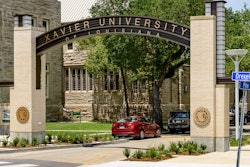Atlanta — Foundations have a long history of support for American higher education. But as foundations re-focus and shift their priorities, new trends in philanthropic giving are challenging colleges and universities to examine their ability to attract funding.
Foundations contributed $2.46 billion to higher education during the 1995 academic year — 19% of all private contributions — according to the Council for Aid to Education. Over the past 20 years, their giving to higher education has increased 65%.
And while foundation support for higher education is expected to remain strong, fundamental changes in their giving strategies are influencing which institutions and what types of programs get funded.
“We’re seeing more emphasis on pre-collegiate education than we’ve seen before,” said Loren Renz, vice-president for research at The Foundation Center. “Funders who used to fund at the college level now support pre-collegiate initiatives.”
However, colleges and universities that form partnerships with community school systems to develop, for example, programs that encourage and pave the way for students to attend college, find themselves well-positioned these days to attract foundation support.
The Effect on HBCUs
Historically Black colleges and universities (HBCUs) may be affected both by foundations’ funding strategies that directly address support for minority institutions, and by broader grant-making trends — such as growing foundation support for initiatives that promote science studies or that encourage society to place more value on cultural diversity.















